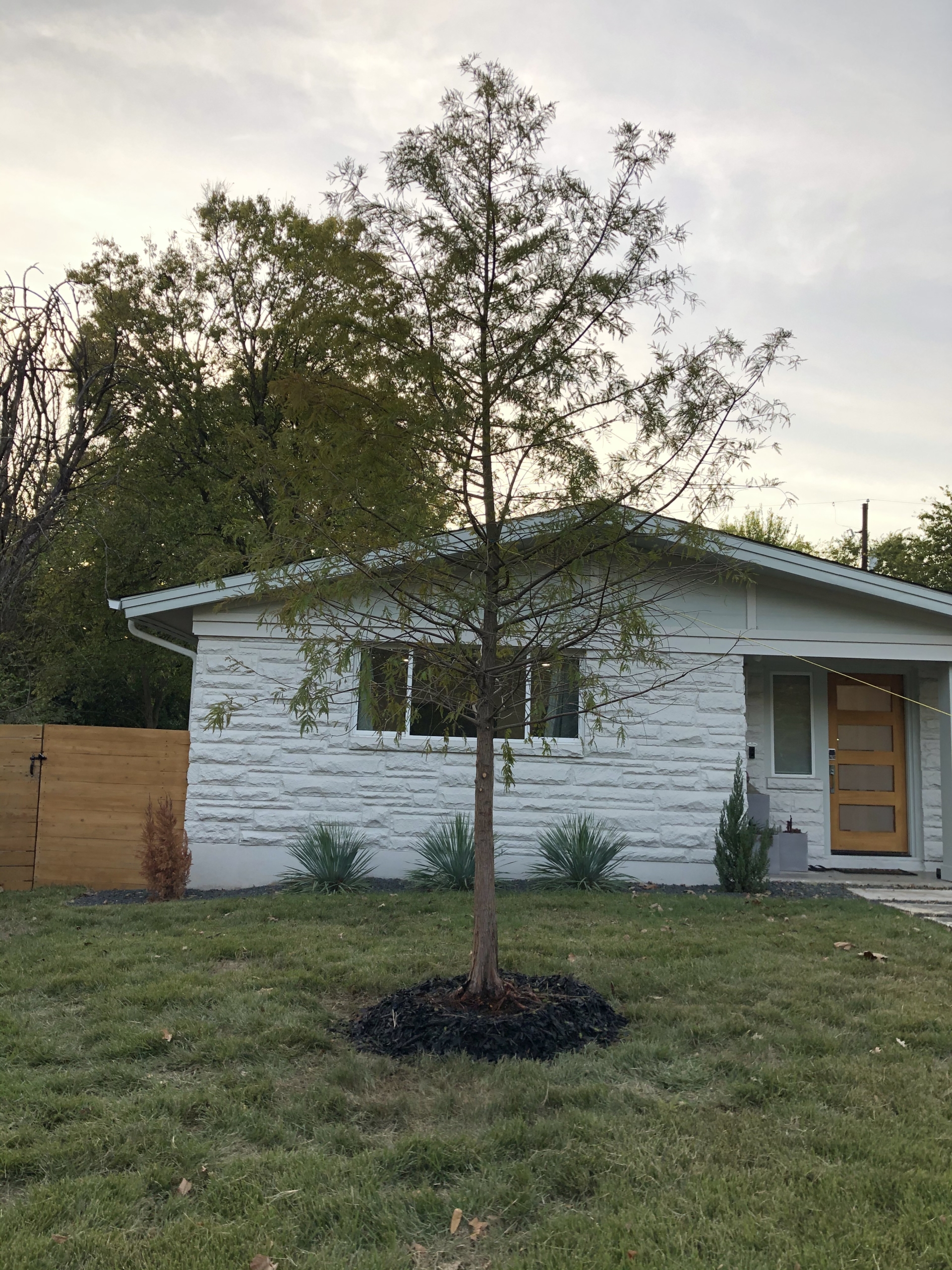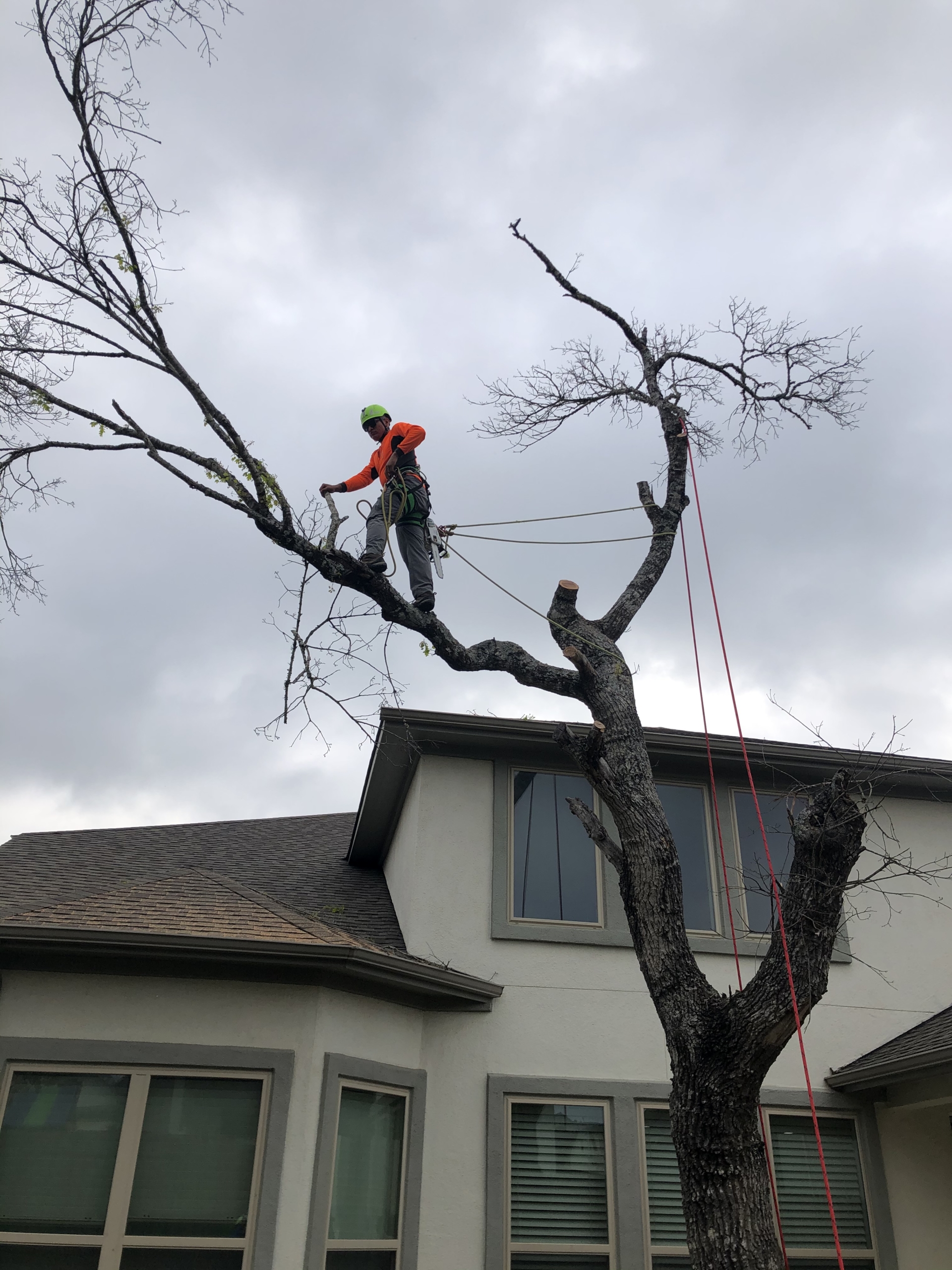Bee Cave Tree Services | Tree Care By Arborist For Residential & Commercial Clients
- Tree Removal, Tree Planting, and Tree Trimming
- Certified Arborists
- Emergency Services
Call Today to Schedule an Appointment. 512-212-0010
Call Today to Schedule an Appointment. 512-212-0010
Bee Cave offers a landscape unlike anywhere else in Central Texas. From oak-covered hillsides to meticulously designed properties overlooking the Hill Country, tree care in this area demands precision, planning, and a deep understanding of how trees interact with steep terrain, wind exposure, and hardscaping. Trees here grow in tight spaces, compete with shallow soil, and often straddle the line between beauty and risk. Protecting them requires certified insight and local expertise.
At Happy Tree Service of Austin, we bring science-first tree care to Bee Cave homes, HOAs, and commercial sites. Whether you’re managing trees around a luxury pool, clearing storm-damaged limbs, or planning canopy preservation for the long haul, our team delivers certified arborist service designed specifically for this region. We know the trees. We know the climate. And we know how to take care of both.

From steep driveways to sensitive hardscape installations, tree care in Bee Cave calls for skill, experience, and a customer-first approach. That’s exactly what we provide.
Every job starts with an ISA Certified Arborist who understands how Texas trees grow, decline, and respond to care. With over three decades of experience in the Hill Country, we’ve worked with live oaks, cedar elms, red oaks, and ornamental species across gated estates, hillside homes, and lake-adjacent properties. We use that experience to deliver care tailored to both the tree and the environment around it.
Trees in Bee Cave often face risk factors that aren’t visible from the ground—leaning over homes, cracks in large limbs, or infections spreading quietly through the root system. Our team includes professionals qualified in both tree risk assessment and oak wilt management, meaning we can identify safety threats, disease symptoms, and hidden decay before it leads to damage.
We’ve worked in neighborhoods where tree roots grow under flagstone, where pool decks are built around legacy oaks, and where steep driveways make equipment access a challenge. Our crews are trained for these situations. We know how to plan removals, pruning, or fertilization without damaging surrounding structures, irrigation systems, or high-value plantings.
You won’t find debris left behind or guesswork in our estimates. We prioritize safety—for you, your property, and our team—at every stage of the job. From crane-assisted removals to precision trimming near glass fencing, we operate with care and clarity. Our communication is straightforward, and our crews are respectful, reliable, and fully insured.

Pruning in Bee Cave is as much about aesthetics as it is about safety. Many properties feature scenic views, tiered lawns, and trees planted for architectural balance. We prune with all of that in mind—enhancing structure, reducing risk, and preserving the design you’ve worked hard to create.
When trees outgrow their space or develop heavy, wind-prone limbs, we perform crown reduction to bring the canopy back into balance. This is done with precision—not topping, which harms the tree—but through selective shortening of limbs in a way that maintains structure and encourages healthy regrowth.
Branches that scrape roofing, block entryways, or hang low over driveways can pose a hazard. We trim these areas while preserving the natural canopy and avoiding unnecessary cuts. Our crews are trained to work in tight residential spaces without damaging surrounding landscape elements.
Overcrowded trees are more likely to develop fungal infections, break under wind pressure, and shade out the plants beneath them. We thin interior growth to open space within the crown—allowing airflow, reducing disease risk, and letting light reach lawns, beds, or patios.
For younger trees or recent plantings, early structural pruning is key. We shape canopies to promote single leaders, strong branch unions, and balanced growth. This reduces the need for aggressive trimming later and helps your trees grow stronger, not just taller.
Bee Cave’s steep lots, dense foliage, and frequent wind events make safe tree removal a necessity—not just a service. Whether you’re dealing with a tree leaning toward your home or an oak uprooted by a storm, we have the training and tools to handle it properly.
Not every tree can be saved. If your tree is showing signs of decay, structural instability, or advanced oak wilt, we’ll assess the situation and explain your options. We only recommend removal when there’s no better path forward—and we’ll guide you through what comes next.
In high-end properties, access is often limited and surroundings are too valuable for drop-and-drag removal. We use advanced rigging systems and sectional dismantling to lower limbs piece by piece. This allows us to work over rooftops, patios, pools, or fences without causing damage.
When a tree fails suddenly—due to lightning, wind, or internal rot—we respond quickly. Our emergency tree service includes stabilization, hazard mitigation, and complete removal if necessary. We also inspect nearby trees for secondary damage to help prevent future incidents.
We plan every removal to protect turf, hardscaping, and nearby plantings. Ground mats, crew coordination, and detailed cleanup are standard. When we leave, your space will be as clean—or cleaner—than when we arrived, and ready for whatever’s next.
Tree removal should never leave behind a half-finished job. Leftover stumps are not only unsightly—they invite decay, interfere with replanting, and reduce landscape usability. Our stump grinding services are designed to clear the area completely, with care for the design elements around it.
We offer shallow or deep grinding options depending on what you plan to do next. Whether you’re installing sod, creating a garden bed, or planting a new tree, we grind below grade to prepare the space properly and reduce future root interference.
Stumps are a magnet for pests like termites and carpenter ants—not to mention fungal infections that can spread to nearby trees. Grinding eliminates this risk, breaking down the decaying material and sealing off the area from future infestation.
Many Bee Cave homes include drip lines, lighting, or decorative stonework near tree bases. Our grinding equipment is compact and maneuverable, allowing us to access tight spots without disturbing your irrigation system or surrounding design features.
Even in the most well-designed landscapes, trees can struggle beneath the surface. In Bee Cave, many properties sit on rocky, compacted soil that limits root growth and oxygen flow. Trees planted near homes, walkways, or driveways may be healthy above ground but stressed below. We offer science-based treatments to address these hidden problems.
When trees show signs of stress—like sparse foliage, yellowing leaves, or early leaf drop—we don’t make assumptions. We collect soil samples and tissue from affected trees to check for nutrient imbalances, root damage, or compacted layers that are limiting growth. Lab-backed testing helps us deliver targeted care that gets real results.
Our deep root fertilization process delivers nutrients directly to the active root zone, where they’re most effective. This supports denser foliage, better seasonal growth, and improved drought resilience. Whether your trees are mature or newly planted, these treatments give them a boost when they need it most.
When soil is too dense, roots can’t access oxygen, even with added nutrients. Air-spading uses compressed air to loosen compacted areas safely, exposing the root system without cutting or tearing. This improves water flow, reduces disease pressure, and allows roots to expand naturally.
Trees located near recent additions, driveway pours, or heavy foot traffic often suffer from compacted soil and root restriction. We use a combination of air-spading and deep root feeding to restore health in these high-stress areas. In many cases, this treatment prevents slow decline and helps trees recover lost vigor.

Bee Cave’s tree canopy is dominated by live oaks and red oaks—two of the species most vulnerable to oak wilt. This fast-moving fungal disease can spread rapidly through root systems or insect transmission, killing trees within weeks or months. Happy Tree provides certified oak wilt services to help prevent outbreaks and contain them when they occur.
In neighborhoods where oaks grow close together, underground root grafts can act as highways for oak wilt. Once infected, the disease can move from tree to tree without ever surfacing until it’s too late. Add in spring pruning wounds and increased beetle activity, and the risk grows exponentially.
Our arborists are trained to recognize oak wilt symptoms early. Red oaks may decline suddenly, dropping leaves that turn brown or bronze at the margins. Live oaks usually decline more gradually, starting with thinning canopies, veinal necrosis, and leaf drop in early spring. Accurate identification is key to stopping spread.
We follow strict pruning schedules to reduce oak wilt risk. The safest time to prune oaks in Bee Cave is between July and January. Outside that window, cuts are sealed immediately, and tools are sanitized between trees. These simple steps make a major difference in preventing new infections.
If oak wilt is confirmed, our team develops a site-specific plan that may include trenching, selective removal, and systemic fungicide injections. We’re Texas Oak Wilt Qualified, which means our protocols meet state-recognized standards for prevention and containment. We also offer ongoing monitoring and re-evaluation to protect neighboring trees.
Not every structurally compromised tree needs to be removed. When a tree shows signs of weakness but remains healthy overall, cabling or bracing can provide critical support. These systems reduce failure risk and allow you to retain the canopy value, shade, and character your tree provides.
Trees with codominant trunks, narrow branch unions, or heavy limbs growing over driveways or patios may be viable candidates for support. After a risk assessment, we’ll let you know whether structural reinforcement is a good option. If the tree is otherwise healthy, this may allow it to remain safely in place for many years.
Some trees—especially live oaks—develop broad canopies with limbs that extend far from the trunk. These limbs are vulnerable to failure under wind pressure or heavy rain. We install high-strength cables and steel bracing rods to stabilize these areas and reduce the chance of sudden breakage.
Bee Cave’s hilltop homes and sloped properties are often more exposed to wind. This increases the likelihood of limb drop or structural failure in mature trees. Cabling and bracing help mitigate this risk while maintaining the tree’s natural form. Our installations are discreet, effective, and reviewed annually for continued safety.
Bee Cave’s trees are valuable—not just for their beauty, but for the role they play in shade, stormwater management, and property value. But in a climate like ours, with shallow soil, oak wilt, and seasonal wind threats, long-term care takes more than guesswork. It takes training, planning, and a team that understands the landscape.
At Happy Tree Service of Austin, we combine over 30 years of Hill Country experience with ISA Certified Arborist credentials, oak wilt qualifications, and science-led service. Whether you need routine pruning, storm cleanup, planting advice, or emergency removal, we’re here to help.
Call today to schedule a free consultation in Bee Cave. Let’s protect your trees—and everything around them—with certified care where you need it most.